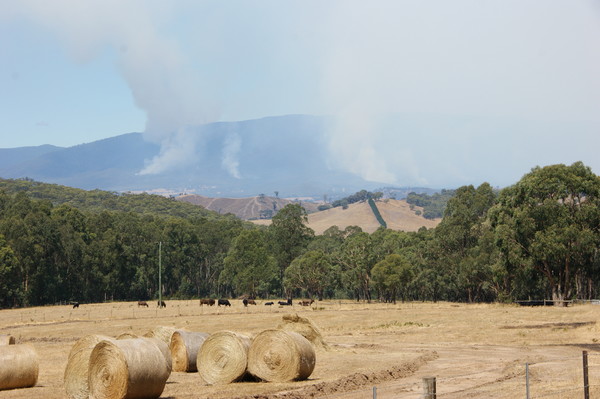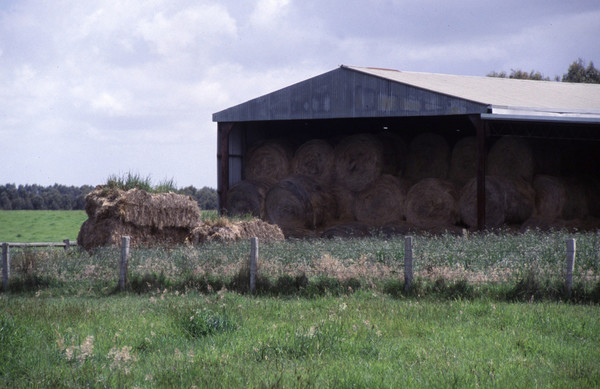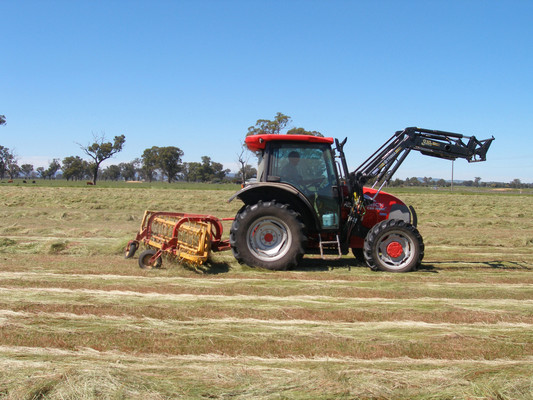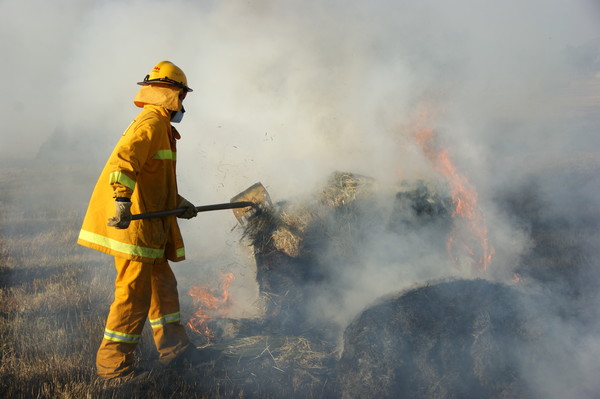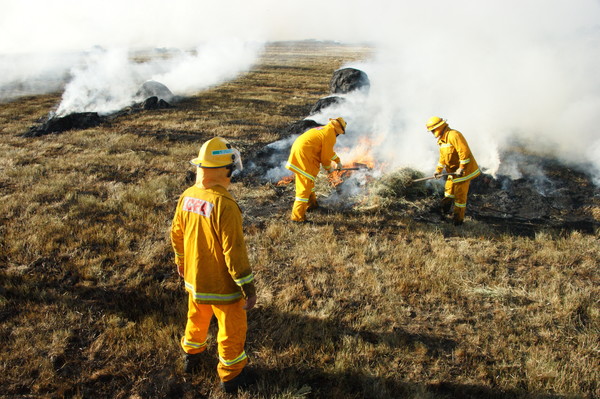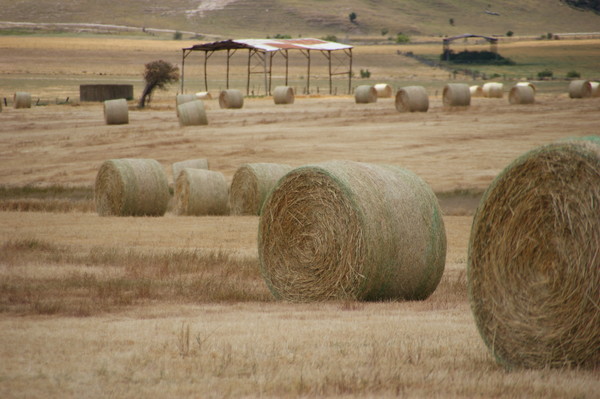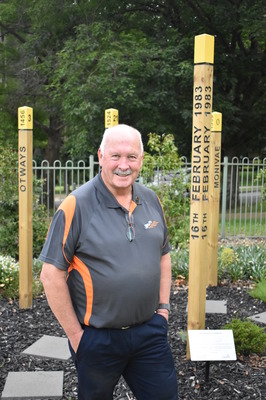The outer eastern suburbs of Melbourne are known for beautiful rolling hills, lush bushland and thriving agriculture.
But a combination of these features has seen the area also experience some of the county’s worst bushfires, from Ash Wednesday to Black Saturday and the Bunyip State Park fires earlier this year.
During all of these events, farmers and landowners have been left devastated.
So as communities continue with this season’s bushfire preparations, it’s worth taking a moment to consider the fundamentals when preparing large properties for the fire season.
According to the CFA, from 2005 to 2010 an average of 85 preventable farm activity related fires started each year on rural properties.
Meanwhile, the Bunyip State Park fire in March burned about 10,000 hectares of land, with numerous farms amongst those impacted.
Graham Simpson is the Chairman of the management committee at the Ash Wednesday Bushfire Education Centre.
He was also the captain of Cockatoo Fire Brigade when the 1983 Ash Wednesday bushfires hit the town.
“Farms have to do quite a bit of work because it’s not only a fire in their property, affecting their farm, it can affect neighbouring farms as well,” he said.
“Slashing around boundaries and around their houses and sheds is a very important thing for farmers.
“That’s still protecting their property in case their neighbours have a fire.”
The Ash Wednesday Bushfire Education Centre has numerous sources available for the public to source information regarding bushfire preparedness, including checklists that can help landowners keep up to date with their progress.
The CFA also has brochures and an entire booklet of agriculture fire management guidelines called On the Land.
Below are some tips and tricks to help farmers and landowners prepare.
Fuel reduction
Keep fuel loads to a bare minimum around the property and ensure there is a heavily grazed area where stock can be moved on high fire danger days.
Maintain slashed or mown fuel breaks to a width of at least three metres.
Types of fuel breaks include bare earth breaks, slashed or mown breaks, burnt breaks and vertical breaks by minimising ‘ladder fuels’ that allow a fire to move upwards.
Hay
Use a probe test for heat and look out for warning signs such as steam, unusual smells or slumping.
Allow airflow by not stacking hay bales right up to the roof of a shed and store hay in multiple locations to avoid large losses.
Machinery and harvesters
Check and clean machinery before using for the first time and equip machinery with appropriate fire extinguishers and a shovel.
Consider avoiding harvesting, grinding, welding or slashing on hot, dry, windy days.
Regularly check for straw or grass build-up and overheating bearings.
Burning off
Always register burns and never leave a burn-off unattended.
Have resources on hand to contain the fire if necessary.
Response and suppression
Check, service and recharge all knapsacks and extinguishers before the Fire Danger Period.
Phone 000 as soon as a fire is detected and ensure everyone on the property knows how to use private firefighting equipment.
Keep a fire extinguisher in the house and a fire blanket in the kitchen.
Access for emergency services
Make sure the property name and number is clearly visible from both directions at the property entrance.
Make sure a truck can turn around in access tracks near house blocks, sheds and fences.
Clearly mark all water supplies and ensure water tanks have CFA compatible fittings.
Livestock and bushfires
Avoid cutting internal fencing to allow stock to move as this could cause confusion and distress as the fire front passes.
Do not cut fences along roadsides as stock could cause an accident and where possible use non-combustible materials in fence construction.
Create one or more low-risk areas to which animals can be moved on high fire risk days. Have plenty of drinking water available and defend the area using fire breaks.
Plan early for the evacuation of livestock to a safer district and make arrangements well ahead of time a place to temporarily relocate animals.
Graham said that although farmers typically know how to prepare their farms, there’s always tips and tricks that can be utilised.
He said most importantly, landowners should keep an eye on haystack fires.
“Usually, haystacks have a shed of their own but they can on a bad day spontaneous combust and that would start a fire which could spread through the property,” he said.
When it comes to burnoffs Graham stressed the importance of ensuring the fire is properly put out.
“Fires can burn along root systems. We went to a fire some years ago and the fire was put out two weeks earlier, the thing is it had gone underground through the root system,” he said.
“On a bad day of Total Fire Ban where it’s really blowing a gale, it comes to the surface.
“You’ve got to put it out the best you can and rake it open.
“Put a lot of water on, pull it apart don’t just put a little bit of water on top.”
Graham also advised everyone who lives in a bushfire risk area to have a fire plan, no matter how simple it is.
“It could be just going to spend the day down at Fountain Gate, that’s a plan,” he said.
“You don’t have to have a plan that’s complicated.”
And for those who are determined to stay and protect their property, it’s worth seriously considering the risks.
According to Graham, it’s actually easier for firefighters to work knowing that everyone in the region is evacuated.
“Just imagine putting on a very scratched pair of sunglasses and you have your child’s iPod with very loud heavy metal music playing in your ears and someone blowing a hairdryer in your face. That’s what it’s like,” he said.
“It’s just the noise, the heat, the lack of vision. If you’re prepared to go through that to protect your property then fine.
“It’s an individual thing, but you’re better off getting out.”
The Ash Wednesday Bushfire Education Centre is open on weekends for the public to visit and source information to prepare properties.
For more information, contact awbeccockatoo@gmail.com or visit the centre’s Facebook page.
To view the CFA’s On the Land Agricultural Fire Management Guidelines visit www.cfa.vic.gov.au/plan-prepare/fire-safety-on-the-farm.

